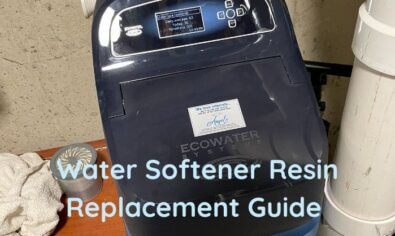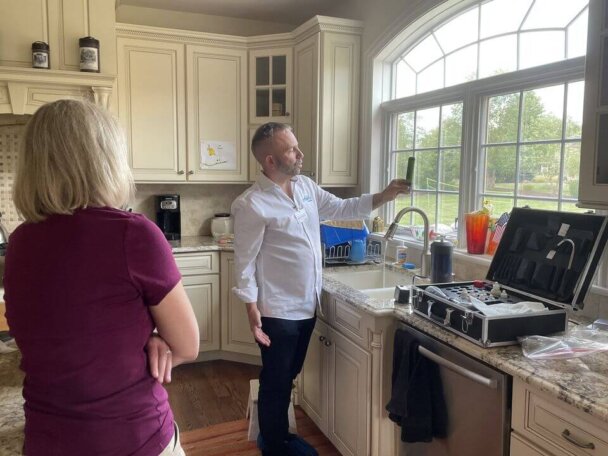History of Water Supply and Distribution

What happened when there wasn’t enough clean water for crops, livestock and the population? Reduced crop yields sometimes led to starvation, diminished livestock totals, and an ill human population. Of course, water was also crucial for sanitation purposes, and disease spread more quickly in areas where a clean water supply was lacking – a truth that continues in some parts of the world today.
The results of obtaining this knowledge? Nearly every major city in written history was located near a water source. A public water supply system was the catalyst for growth, both for the population and cultural evolution towards the world we know today.
But how exactly did we end up here? In a world where a drinking supply is readily available to approximately 74% of the world? Today, we’ll take a journey back in time and retrace the steps of humankind on the path to widespread water supply and distribution.
Ancient Technologies: An Impressive Start
Our journey through history starts well before the modern era, in a time we don’t often associate with the word “technology.” However, the first efforts at creating and distributing a clean water supply beyond small groups of localized people begin much earlier than you might expect.
Qanats
You may find yourself surprised to learn that the earliest attempts to distribute water across a distance were in the hillsides of northwest Persia around 3,000 years ago. Here we see the introduction of slightly sloping tunnels and shafts called Qanats that today are recognized by UNESCO as an outstanding example of traditional water technology in ancient civilizations.
Qanats were underground water systems that used gravity to force water down the lines, where it could be distributed for agricultural, sanitation and drinking purposes. The method was used throughout the region for thousands of years and slowly spread to other areas, including Arabia, Greece, Italy, Turkey, Spain and South America. The most recent use of Qanats appears in Tehran, Iran, in the 1930s.
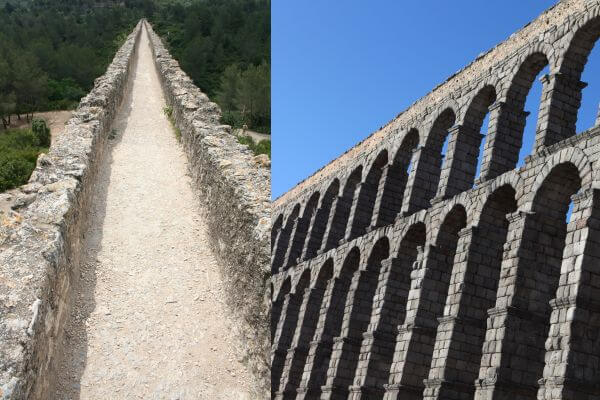
The Roman Aqueduct
Perhaps the most famous water distribution system of ancient times was the Roman Aqueduct. This impressive channel moved water to Rome from springs in the Anio Valley over 20 miles away.
Considered amazing feats of engineering given the period in which they were built, these Aqueducts created extensive and complex networks across the region. Their singular purpose? To bring in a water supply of fresh, clean water that the ordinary Roman citizen could use for drinking, bathing and sanitization, as well as for leisure or beauty purposes like foundations.
The longest structure in the Roman Aqueduct system was an astonishing 57 miles long. This engineering marvel was so long due to the meandering path designed to maintain a constant stream of water.
Distributing the Water Supply: A New Challenge
Securing a water source has always been only half the battle. Once a primary or emergency water supply was successfully brought into a city, another challenge began: creating a water supply distribution system that would provide on-demand water access to residents.
Channel Systems
The first efforts to distribute a drinking water supply to a city’s residents were channels. Channels can be seen in most thriving ancient civilizations and were cut from stone, brick, rubble or concrete. These were useful and revolutionary at the time, but certain issues quickly became evident.
The primary problem with the channel systems was that they didn’t guarantee a clean water supply. After all, they were open on the top to the elements and wildlife, leading to frequent contamination. That contamination would sometimes spread through cities like wildfire, causing significant and sometimes fatal illnesses.
Another problem was that the channels didn’t supply water to homes. They were too large and awkward to provide water to so many places – and they primarily only provided water at a downward slant using gravity.
The solution to these specific problems? Humankind’s first rudimentary piping systems.
Angel Water Now Offers Free Water Tests!
Don’t Guess, Test! Get Your Free Water Test Now and Take Control of Your Water Quality.
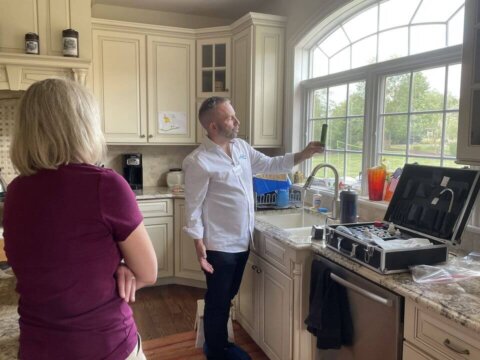
Piping Systems
Some of the first piping systems were mostly made from wood. However, there’s also evidence that some of the oldest pipes were made of clay and lead. Obviously, lead pipes caused a problem – the material would leach into the water lines and cause lead poisoning. Clay and wood pipes weren’t nearly durable enough for long-term use and came with other distinct issues.
Entrepreneurs and inventors continued testing new materials that didn’t break as quickly (or poison the water supply). The result? Cast-iron pipes were created in the 19th century. These new pipes could maintain their structural integrity under intense pressure, didn’t leach contaminants into the water supply and were small enough for introduction in the home.
Of course, introducing cast-iron pipes didn’t solve all water distribution issues on their own. They came at a perfect time when they could be paired with another life-changing invention – the steam engine. Thus, the dream of fresh, clean drinking water in the homes of each family was finally a reality.
Water Works and Public Works: Managing Water Distribution
The first Water Works in the United States was incorporated in Boston in 1962. It was primarily used to provide water to local fire departments and homes. Unfortunately, fires were a common and persistent risk during this period – and without quick access to water, fires often got out of hand. Therefore, it was critical to the firefighters’ effectiveness and success to have a reliable pressurized water source.
A 15-mile-long wooden piping system was made from hemlock trees for the first American Water Works. Although this may seem primitive compared to the extensive, sturdy networks we have today, this older water system proved invaluable to fire departments.
To use the system, firefighters would punch a hole in the existing wooden line. This allowed them access to the pressurized water supply. Then, once the fire was out, they’d plug the hole to restore pressure to the entire system.
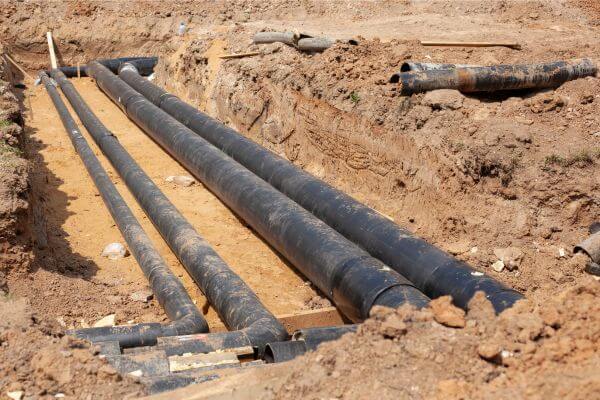
Modernization of Cities: Water Supply and Distribution Today
There were a few cities that revolutionized the way humankind sources and distributes its water supply today. These final monumental historical moments brought us into the modern age and allowed everyone easy access to a water supply.
Philadelphia
Philadelphia was one of the first cities to use cast-iron piping instead of traditional wooden, clay or lead options. Soon, many cities would follow suit because of the new pipe’s durability and sustainability.
New York
New York would build over 40 miles of channels to bring water to Manhattan from the Crofton River. This abundant water supply source (along with cast-iron piping) would help New York modernize its public water distribution system. By the middle of the 19th century, this distribution system would be a world leader in the industry.
Chicago
The city that really grabbed newspaper headlines was Chicago. Our own local city engineered a revolutionary twin-tunnel system to draw its water supply from Lake Michigan – one of the largest freshwater lakes on the planet.
The intake extended two miles into the lake and led to a shaft in the city. From here, a 138-foot standpipe, like a modern-day water tower, was responsible for equalizing water pressure throughout Chicago. Coal-powered steam engines pumped 15 million gallons of water through the system.
Take Your Water Supply Another Step Toward the Future
Today, nearly 90% of Americans get their water from a city water system. This invention has provided us with drinking water in every household for so long that many of us take it for granted. Unfortunately, the quality of our water supply has steadily deteriorated over the decades. Pollution and chemical contamination are primarily responsible for this decline, but so are governments that don’t take water quality as seriously as they need to.
Modern home water filtration systems are a step into the future that help protect your home from these potential contaminants. Do you know what’s in your water? The EPA recommends testing your water supply at least once a year. Call Angel Water, Inc. at (847) 382-7800 to schedule a water testing today!
Interested in a Water Softener System for Your Home?
You don’t have to live with a dry, itchy scalp and brittle hair anymore! It would be our pleasure to help you find the right water softener to make your showers enjoyable again.
Please give us a call at (847) 382-7800 or visit our water softener page to learn more.


